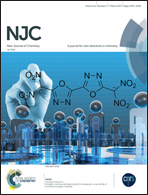Superior performance of an active electrolyte enhanced supercapacitor based on a toughened porous network gel polymer
Abstract
A primary challenge of gel electrolytes in the development of flexible and wearable devices is their weak mechanical strength and poor electrochemical performances. Here, we prepare a novel PVA (polyvinyl alcohol)–H2SO4–BAAS (bromamine acid sodium) gel polymer with a porous network structure as both electrolyte and separator, which achieves excellent mechanical strength, maintains a high ionic conductivity of 21.4 mS cm−1 and provides a reversible redox reaction for enhanced supercapacitor performance. Surprisingly, the operating voltage of the present active electrolyte enhanced supercapacitor (AEESC) is up to 1.5 V, which is much larger than that of the previously reported active electrolyte based supercapacitors (about 1.0 V). Furthermore, the AEESC exhibits a maximum specific capacitance of 390 F g−1 at a current density of 0.8 A g−1, a remarkably high energy density of 30.5 W h kg−1 at a power density of 600 W kg−1 and good cycling stability. Additionally, such a device displays only a small capacitance loss when the gel polymer is under a large tensile strain of 100% or under a high pressure of 2000 kPa. Meanwhile, the capacitance of the device was maintained very well after 500 complete bending cycles, indicating that the robust gel polymer endows the fabricated AEESC with good flexibility and electrochemical stability.



 Please wait while we load your content...
Please wait while we load your content...